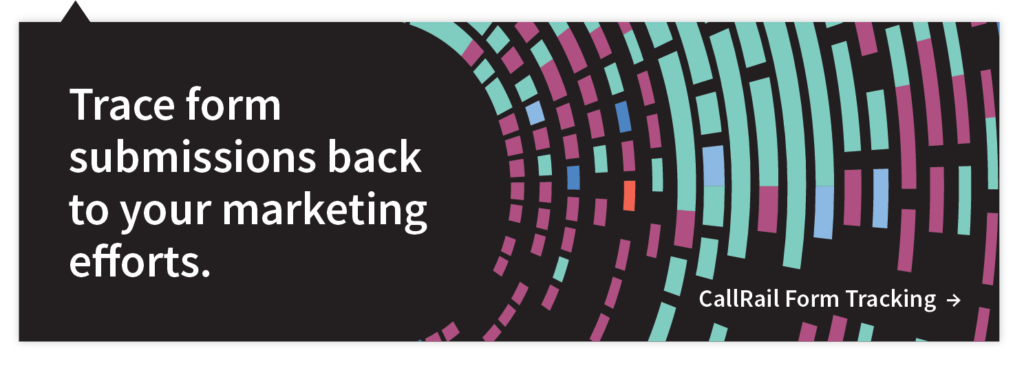It’s essential for all companies to have a contact form on their business website, no matter what their size. Contact and lead generation forms require website visitors to enter their email address and other kinds of personal information. Since they are used to gather information about prospects, contact forms give companies the opportunity to keep track of new leads and learn more about them.
For this reason, it’s essential to include information on your forms that will help you determine if a prospect is a good fit for your company. There are many data and form analytics tools that can help you uncover insights about your prospects and evaluate the effectiveness of your contact forms. Here are 5 things you can learn about your leads by analyzing your contact form data.
1) Whether they’re likely to become a customer (or not)
According to a recent study by Hubspot, most mid-sized to large companies acquire less than 5,000 qualified leads per month. This indicates that many companies lack an effective lead qualification process and waste time on leads who aren’t ready to become customers.
One way companies can address this problem is to restructure their forms to attract high-quality leads. At the very least, your form needs a clear call-to-action so website visitors know what they’re getting in exchange for filling it out. Your form should have a limited number of fields to avoid overwhelming your visitors, which can cause them to abandon your site.
Companies can also qualify their leads by implementing website tracking and lead scoring software. Lead scoring software allows companies to analyze the leads collected through their contact forms so they can identify the ones who are most likely to become customers.
2) Whether they’re a good fit for what you’re offering
By asking for some key information from your leads — for example, the size of their company and their industry — you’ll have a much better sense of whether they’re a good fit for what you’re selling, and whether the relationship will be fruitful for both parties.
It goes without saying that larger companies with bigger budgets are much more likely to be able to afford your services. But even if they’ve got enough money to invest in what you’re offering, their industry or business model might mean they’re not a great fit. (For example, if your lead-gen services favors a focused, quality-over-quantity approach, a big company that wants to generate a huge number of leads won’t be the best partner for you.)
The bottom line: It’s always a good idea to ask your leads about their position and industry to assess whether they are promising leads.
3) If your forms are actually winning them over
It’s essential for companies to test out their contact and lead generation forms to make sure they’re actually working. This is where form analytics tools come into play. These tools give you insights into how effective your forms really are.
Traffic and conversion analytics tools are especially important when it comes to measuring the effectiveness of your forms. These tools will uncover data that reveals whether your forms are successfully winning over leads. For instance, they’ll tell you how many site visitors filled out your form and converted, as well as how many of them started but didn’t complete the form, or otherwise failed to submit it. This is useful information that lets you know whether or not your forms are effectively engaging your leads.
4) Why people are abandoning your forms
Your contact form data can also be used to find out if people are finishing your forms. Analytics tools — like CallRail Form Tracking — will help you understand why your website visitors are abandoning your forms and at what point they are most likely to stop filling it out.
Form tracking assist you with analyzing the traffic that reaches your forms, and understanding the ‘why’ behind how your prospects are engaging with you. Some other metrics these analytics tools assess are drop-off rates and the average length of time it takes people to fill out the form fields. Some tools even generate detailed reports that reveal which fields cause visitors to abandon your form, which fields frustrate them, and how long it takes them to fill out your forms.
Above all, form tracking will help you figure out why people are abandoning your forms. This can help you to better understand what the problem areas are, and how to address them.
5) What form fields are driving your leads crazy
The number of form fields and the questions you ask on your contact forms can make or break a potential lead. That’s why so many studies have been done to uncover the optimum number of fields.
Close analysis of your form fields can also reveal which fields are engaging your website visitors and which ones are frustrating them. In order to uncover this information, you will need a form analytics tool. These tools can help you identify which fields are causing problems for leads and analyzes what fields might be causing them to abandon your form. By understanding which fields are causing problems for your site visitors, you can address these pain points and develop a more effective contact form.
Contact forms are capable of revealing much more than simply your prospect’s name and email address. In fact, they can provide companies with extremely important information about their prospects. Companies can make the most of their contact forms by using form tracking and analytics software to assess their forms’ performance and gain valuable insights to help them qualify each lead. 
The post 5 things your contact form data is telling you about your leads appeared first on CallRail.

